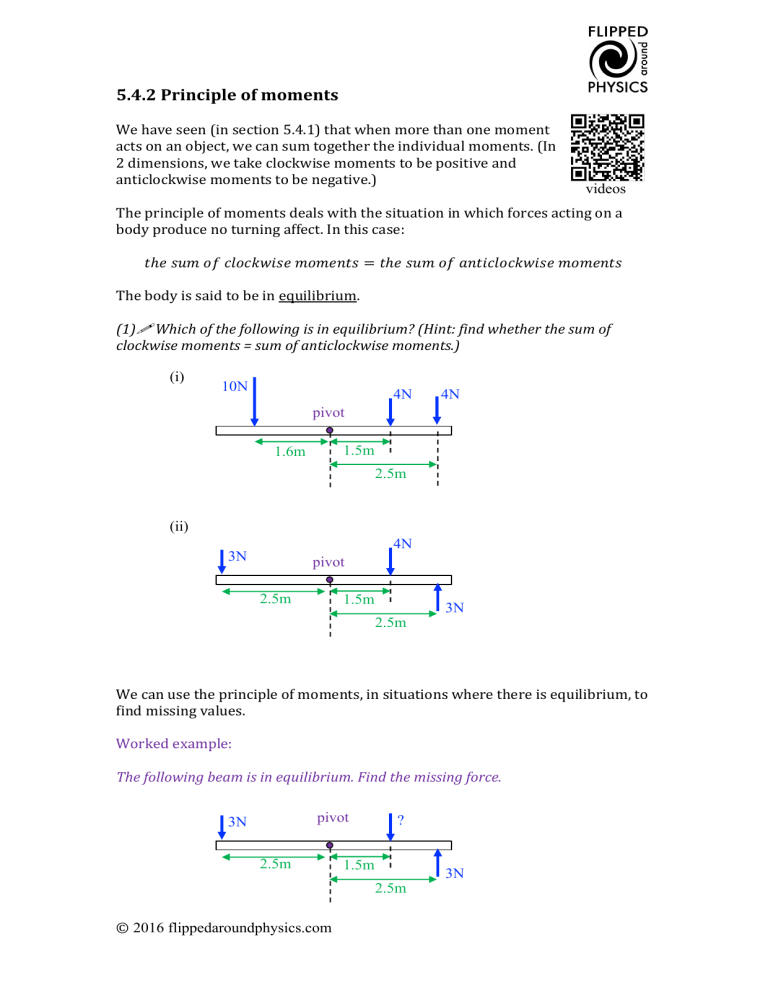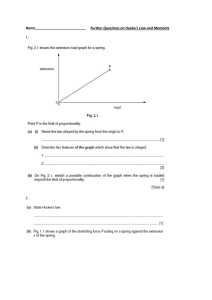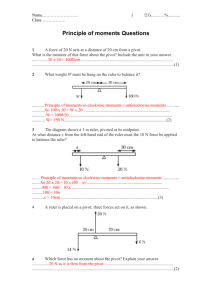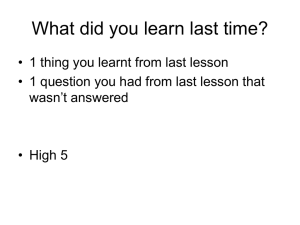Principle of Moments Worksheet: Equilibrium & Calculations
advertisement

5.4.2 Principle of moments
We have seen (in section 5.4.1) that when more than one moment
acts on an object, we can sum together the individual moments. (In
2 dimensions, we take clockwise moments to be positive and
anticlockwise moments to be negative.)
videos
The principle of moments deals with the situation in which forces acting on a
body produce no turning affect. In this case:
!ℎ# %&' () *+(*,-.%# '('#/!% = !ℎ# %&' () 1/!.*+(*,-.%# '('#/!%
The body is said to be in equilibrium.
(1)! Which of the following is in equilibrium? (Hint: find whether the sum of
clockwise moments = sum of anticlockwise moments.)
(i)
10N
4N
4N
pivot
1.5m
1.6m
2.5m
(ii)
4N
3N
pivot
2.5m
1.5m
2.5m
3N
We can use the principle of moments, in situations where there is equilibrium, to
find missing values.
Worked example:
The following beam is in equilibrium. Find the missing force.
pivot
3N
2.5m
?
1.5m
2.5m
© 2016 flippedaroundphysics.com
3N
In this situation, the two 3N forces are producing anticlockwise moments. The
missing force should produce a clockwise moment to balance these.
!ℎ# %&' () *+(*,-.%# '('#/!% = !ℎ# %&' () 1/!.*+(*,-.%# '('#/!%
? × 1.5 = (3 × 2.5) + (3 × 2.5)
(3 × 2.5) + (3 × 2.5)
?=
1.5
? = 10=
(2)! Use the principle of moments to find the missing values in the following:
(i)
pivot
1.0m
2.4m
13N
(ii)
?
2.5m
15N
?
5N
3N
pivot
4N
1.5m
2.0m
2.5m
3N
Moment due to weight
Sometimes the weight of an object can produce a moment.
Consider the following:
2.0m
0.5m
pivot
F
A beam with a mass of 0.2kg is suspended from a non-central pivot point.
(3)! What do you think the force F represents?
© 2016 flippedaroundphysics.com
(4)! What is the size of force F?
(5)! What is the resultant moment on the beam?
With the addition of a known mass (m), we can use this technique to work out
the mass of a beam of unknown mass. The equipment used is shown below:
pivot
F
m
(6)! Using the principle of moments, explain how you would obtain the mass of
the beam.
© 2016 flippedaroundphysics.com




